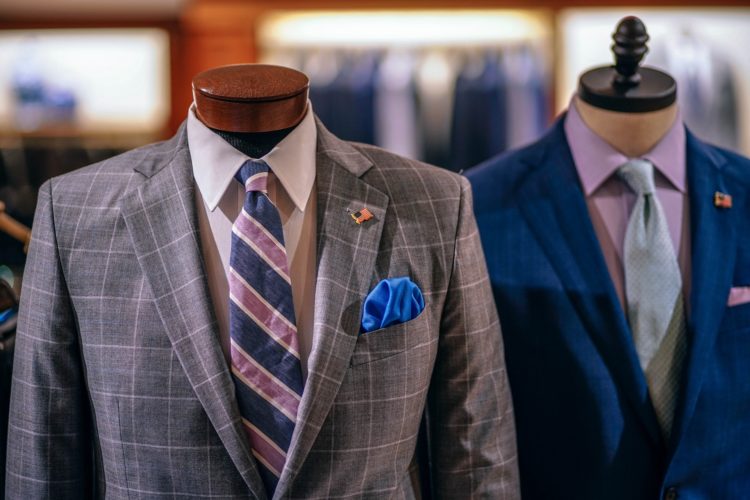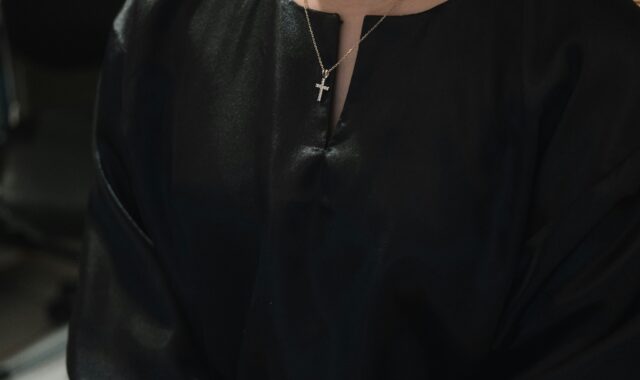Expert advice on what to look for when buying an expensive suit

Looking for a new suit can require a lot of thought. Perhaps you’ve been invited to a wedding, a christening or maybe you’re looking to sharpen up for the office. Either way, a suit should be viewed as a necessary investment. A cheap suit is almost guaranteed to need replacing in a couple of years, whereas well-designed tailoring can last you 20 plus!
Not everyone knows exactly what to look for when it comes to buying a new suit… And how can other people tell that you’re wearing the best? CT shirts, experts in suit design, have created this guide to make your purchase the right one.
The materials
The materials that suits are made from are indicative of how long the garments will serve their purpose as a wardrobe staple.
A good starting point is to avoid those with labels that say it has been created with a wool-blend or man-made materials, opt for natural fibres instead. Polyester, for example, should be avoided. It retains a lot of heat, is less breathable and creases easily. A suit with 100% wool is something that you should look out for — these suits are versatile and ooze comfort. For a lustre look, often silk or mohair (a silk-like material made from the hair of the Angora goat) is added and this gives a luxurious shine to black suits. For extra movement and comfort, a high-quality suit is often made with a small amount of Lycra and this improves its elasticity.
The ‘Super’ value is also an indicator on the finery of the material. The Super is a way of indicating that the wool is of high quality and the higher the number, the finer and lighter the cloth will be.
Not many people will go as far as considering the suit buttons and whether they are made from a durable material. Plastic buttons are prone to breakage and chipping — imagine if you brush against a wall or table, it will be the buttons that take the impact. Another high-quality material that is often used for making durable and long-lasting suit buttons is corozo nuts.
The design
Over time, a suit should mould to your individual body shape to convey a look that is truly unique.
Some weaves are considered as higher end than others, but this choice is largely personal preference. The patterns are created in the suit by interweaving different coloured threads in different ways. The ‘twill’ weave is considered to be stylish — this has a diagonal line of raised fabric and a silk-looking finish. The ‘herringbone’ also gives a smart look— this is an intricate V weave that creates a smooth feel.
Canvassed suit jackets are a popular choice, they’re created with layers of material that sit between the outer suit fabric and the inner lining. This tailoring technique helps the suit maintain structure and shape. What you should look out for is a ‘floating canvas’ — this is where the middle layer has been stitched to the fabric loosely so that the suit is able to mould to your body shape and move when you move.
Look at the lining of a suit for a clear sign on how well it has been made. Despite popular belief that an unlined suit is cheaper than a fully lined one, it actually takes more effort to create an unlined suit as the stitching and cut of the material is exposed. However, lined sleeves improve your ability to slide the jacket on and off.
The details
A well-informed shop assistant will be able to help guide you through your purchase, identifying which tiny details of the garments have the most impact on the style and fit. It can be the tailor’s own way of integrating quality into their work.
The suit lapels are the folds on either side of the opening across the chest. One detail that can indicate the quality of a suit is the lapel roll — this is the fall and curl of the lapel from the collar to the first button. If the suit is one of many rolled off a production line, it is likely that the lapel will be completely flat against the jacket and the roll will be almost non-existent. In a high-quality suit however, the lapel roll will look like it has been carefully curved — giving the jacket more texture and a better appearance.
The back vents will determine how freely you can move around in the suit, and most importantly they will determine how comfortable the garment is. Choose suit jackets with twin back vents on the back of the jacket to improve its flexibility and range of movement.
Another feature to look out for on a suit is the stalk loops. This is a traditional tailoring feature which neatly keeps your flower stalk tucked away. Although it may not be a necessary feature for everyone, it shows attention to detail that’s likely to be an indicator of a good suit.
Look at the buttonholes carefully. Cheaper suits can often have frayed buttonholes as they haven’t been stitched with delicacy. Small details like this are big giveaways as to how your suit has been made.



